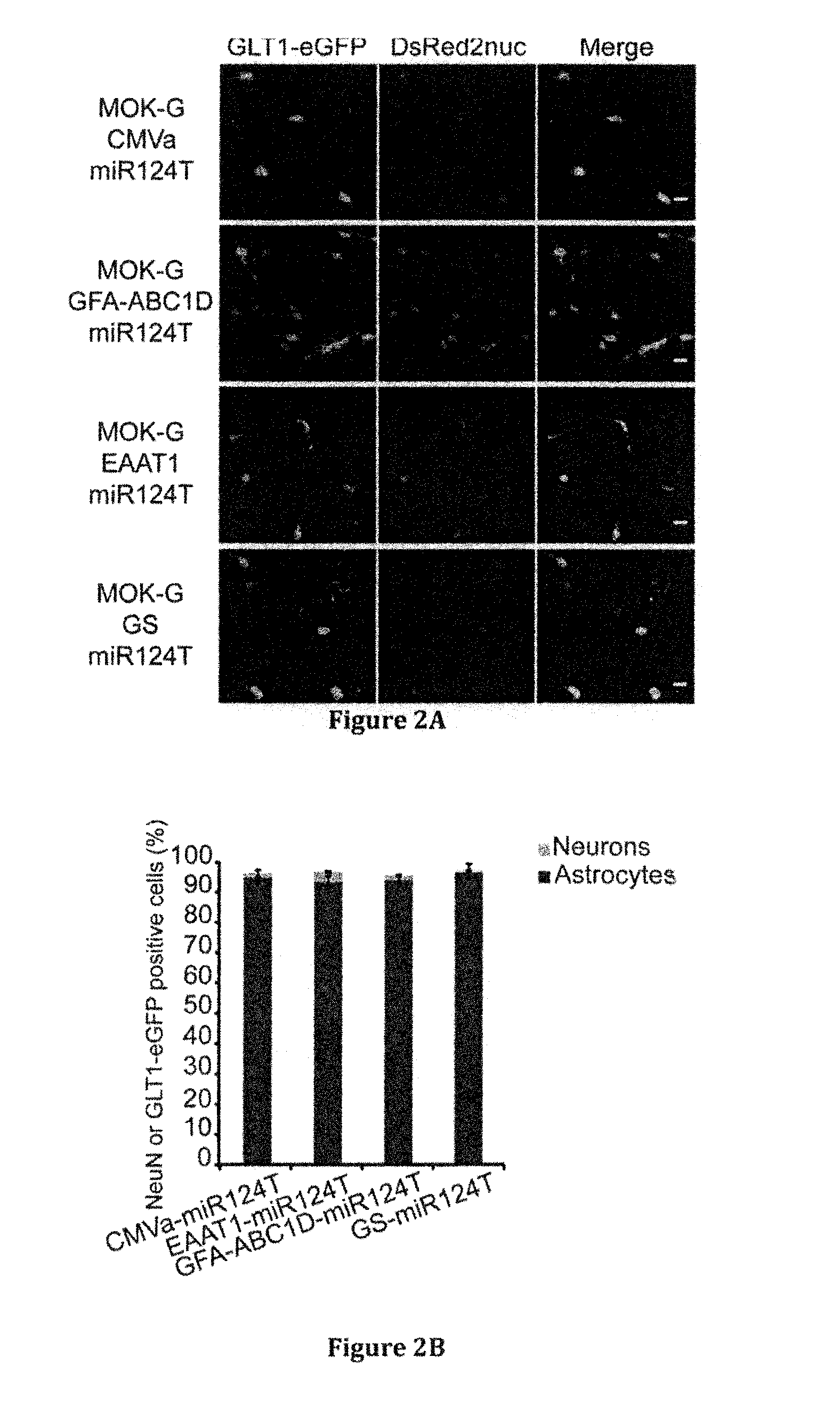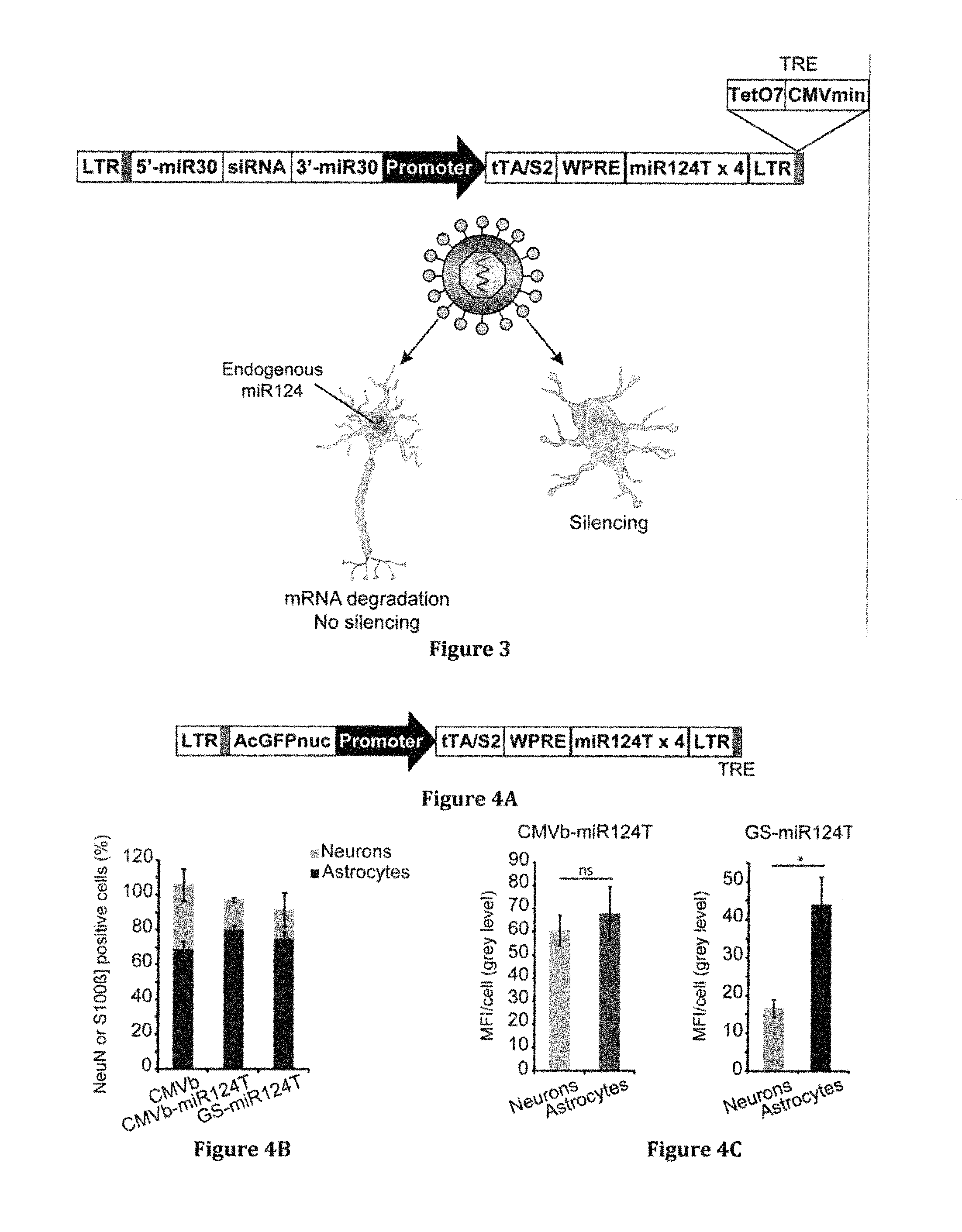Vector for the selective silencing of a gene in astrocytes
- Summary
- Abstract
- Description
- Claims
- Application Information
AI Technical Summary
Benefits of technology
Problems solved by technology
Method used
Image
Examples
example
[0073]In the present experimental setting, the tissue-specific promoter is driving the expression of the tetracycline transactivation and the miRT is further restricting the expression of the siRNA in astrocytes.
[0074]As tissue-specific promoters, the inventors have analysed three astrocytic promoters: the one of the excitatory amino acid transporter 1 (EAAT1), the glutamine synthetase (GS) and the shortest form of the GFAP promoter (GFA-ABC1D). These promoters were first tested in a constitutive system and then integrated in a single regulated vector previously described (Vigna et al., 2005). Recent studies have demonstrated that siRNA embedded in a miRNA backbone may provide safer therapeutic for siRNA expression vectors, as compared to small hairpin RNAs, by decreasing the risk of saturation of the endogenous siRNA machinery (Boudreau et al., 2009). In addition pol II promoters, such as tissue-specific promoters, are used to express miR-embedded siRNA (Boudreau et al., 2009; Boud...
PUM
| Property | Measurement | Unit |
|---|---|---|
| Nucleic acid sequence | aaaaa | aaaaa |
Abstract
Description
Claims
Application Information
 Login to View More
Login to View More - R&D
- Intellectual Property
- Life Sciences
- Materials
- Tech Scout
- Unparalleled Data Quality
- Higher Quality Content
- 60% Fewer Hallucinations
Browse by: Latest US Patents, China's latest patents, Technical Efficacy Thesaurus, Application Domain, Technology Topic, Popular Technical Reports.
© 2025 PatSnap. All rights reserved.Legal|Privacy policy|Modern Slavery Act Transparency Statement|Sitemap|About US| Contact US: help@patsnap.com



